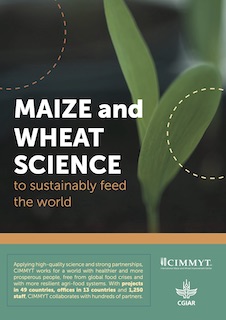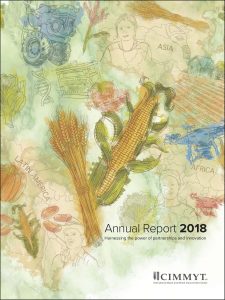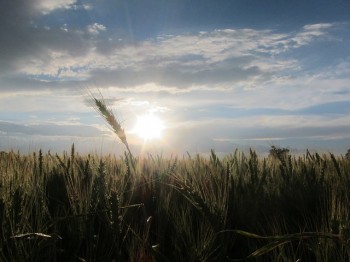Ricardo Curiel
Responsible for assisting the Director General with internal and external communications about CIMMYT’s impact, main accomplishments and news relevant to stakeholders.
Responsible for assisting the Director General with internal and external communications about CIMMYT’s impact, main accomplishments and news relevant to stakeholders.
Riya works as the Communication Officer at the Borlaug Institute for South Asia (BISA), leading communications for a BISA-led project- Atlas of Climate Adaptation in South Asian Agriculture (ACASA).
She is currently executing a comprehensive communication strategy for partner countries in South Asia, such as Nepal, Bangladesh, Sri Lanka, and India. Riya holds a master’s degree in public health and brings a range of experience in various domains such as maternal nutrition, food security, WASH, and now agriculture and climate change.
Prior to BISA, Riya has led and ideated effective social behaviour change communication (SBCC) campaigns on-ground concerning maternal health in one of the aspirational districts of India. With her expertise in content strategy, Riya also supported her clients in establishing a strong thought leadership and public relations in media.
Maria Monayo is a seasoned communications professional with over a decade of expertise in the NGO sector.
Her dynamic skill set encompasses content development, event management, and media relations. With a proven track record, Maria has orchestrated compelling content strategies, organized high-profile events such as international conferences, and fostered strong partnerships with stakeholders. Her ability to translate technical information into accessible formats and skill in creating visual media have been instrumental in her successful career.
Richa is a digital anthropologist and communicator with 17+ years of experience in the media and development sector. Currently, she provides strategic leadership and support for BISA’s institutional and corporate communications programs in India.
She is an ex-journalist and worked with India’s leading news channel, TV Today (now India Today), as a correspondent and anchor, but now aims to strengthen and empower NGOs with communication strategies in the digital landscape. Richa has a broad understanding of coalitions and networks; she strives to develop people-centric communication strategies for the Asia Pacific region. Richa’s previous role, as a fellow for the Affinity Group of National Associations program, provided overall programmatic leadership and oversight for policy advocacy, knowledge management, communication and campaigns. Her core strengths are digital media, content development, filmmaking, website management, media mobilization, social media & Comms Strategy.
As the world turns its attention to the policy-shaping discussions during this week’s Pre-Summit of the UN Food System Summit, the need for science and innovation to advance the transformation of food, land and water systems is clear.
The International Maize and Wheat Improvement Center (CIMMYT), with its 50-year track record of impact, success and high return on investment, is essential to these efforts.
Our new institutional brochure, Maize and wheat science to sustainably feed the world, links CIMMYT’s mission, vision and excellence in science to the urgent needs of a world where an estimated tenth of the global population — up to 811 million people — are undernourished.
CIMMYT is also a crucial wellspring of response capacity to CGIAR — the largest global, publicly funded research organization scaling solutions for food, land and water system challenges.
View and download the new CIMMYT Brochure.
 Maize and wheat science to sustainably feed the world explains why we do what we do in light of these challenges.
Maize and wheat science to sustainably feed the world explains why we do what we do in light of these challenges.
Applying high-quality science and strong partnerships, CIMMYT works for a world with healthier and more prosperous people, free from global food crises and with more resilient agri-food systems.

Read or download the full report in PDF format
Read the web version of the report
In 2018, CIMMYT continued to innovate and forge strategic alliances to combat malnutrition, tackle the effects of climate change and respond to emerging threats.
Building on the release of a new wheat genome reference map, our researchers more precisely tagged genes for valuable traits, including disease resistance, heat tolerance, and grain quality, in more than 40,000 CIMMYT wheat lines.
In collaboration with our partners, CIMMYT released 81 maize and 48 wheat varieties. More than 40,000 farmers, scientists and technical workers across the world took part in over 1,500 training and capacity development activities. CIMMYT researchers published 338 journal articles.
As the maize-hungry fall armyworm spreads from Africa to Southeast Asia, CIMMYT joined with more than 40 partners in an international consortium to advance research against the devastating insect pest.
CIMMYT used a scaling approach to extend the benefits of crop research to more farmers and consumers in developing countries in transformative and lasting ways. Smallholder farmers in Mexico, Pakistan and Zimbabwe are benefitting from the use of appropriate machinery and implements for efficient and climate-smart agriculture. A manual developed with the Food and Agriculture Organization (FAO) of the United Nations offers technical and business advice for local entrepreneurs offering mechanized services, such as sowing or threshing, to smallholder farmers.
As part of taste tests in Ethiopia, Kenya, and Tanzania, consumers indicated their willingness to pay a premium for quality protein maize (QPM), which contains enhanced levels of the amino acids needed to synthesize protein.
A CIMMYT-led study on gender has explored the lives and viewpoints of 7,500 men and women from farming communities in 26 countries, providing invaluable information that will lead to better productivity and food security.
2018 showed us that the passion and values of staff and partners help CIMMYT to have major impact on the livelihoods of smallholders and the poor. This Annual Report pays tribute to them.
Read or download the full report in PDF format
Read the web version of the report

EL BATAN, Mexico (CIMMYT) — Got a question about wheat? Whether you are a scientist, a researcher or simply interested in learning more about the vital staple crop that provides 20 percent of the world’s calories, the Wheat Atlas can help.
The online resource developed by the Global Wheat Program (GWP) at the International Maize and Wheat Improvement Center (CIMMYT) provides statistics on wheat production and trade, wheat varieties, production challenges and international wheat nurseries, which evaluate the suitability of wheat to diverse environments.
“Although the primary users are wheat scientists, we know from anecdotal evidence that donors and policymakers are also using it,” said Petr Kosina, who led the development and recent revamp of the interactive website.
The Wheat Atlas was the brainchild of Hans Braun, GWP director, he explained, adding that the project evolved into a collaboration involving Kosina, web master Paul Moncada, senior scientist David Hodson and Tom Payne, head of the Wheat Germplasm Bank, which stores seeds. CIMMYT’s Geographic Information Services team created maps.
Improvements include a redesign of site structure and navigation based on user trends observed in data provided by Google Analytics and a 2013 survey. The website now features daily wheat news on the homepage.
“The work is ongoing,” Kosina said. “We’re in continuous ‘beta mode’, improving the functionality of the site and user experience. For example, we’re developing an online submission form for users to input data on newly released wheat varieties and a wheat scientists’ ‘hall of fame’. Before the end of the year we’ll also improve data visualizations.”
The website provides up-to-date information on new wheat varieties being released worldwide, as well as data from the U.N. Food and Agriculture Organization, the U.S. Department of Agriculture, the World Bank and the U.N. Development Programme.
Since the official launch of the Wheat Atlas in 2009, web traffic has increased to an average of 2,200 unique visitors a month, said Kosina, who works closely with webmaster Moncada.
“We’re very happy with recent access statistics, which have improved since the Search Engine Optimization we did earlier this year, but we need secure funding for bigger plans and development,” he said. “We need a new source of funding.”
The Wheat Atlas was supported until 2013 by the Durable Rust Resistance in Wheat project, which aims to reduce the devastating impact of stem rust disease on wheat, led by Cornell University.
The CIMMYT library has a large historic database of scientific publications with descriptions of new wheat varieties compiled over a 15-year time span, Kosina said.
“My dream is to consolidate this database with the Wheat Atlas and GRIS, the world’s largest database of wheat germplasm, with more than 160,000 accessions, and make it available online in the Wheat Atlas – this would be absolutely unique and smashing,” he added.
Every two years, the site managers gather information to provide a snapshot of the most important wheat varieties grown by farmers in developing countries, including acreage estimates. Mina Lantican in CIMMYT’s socio-economics program is conducting the 2014 review as part of an impact assessment study.